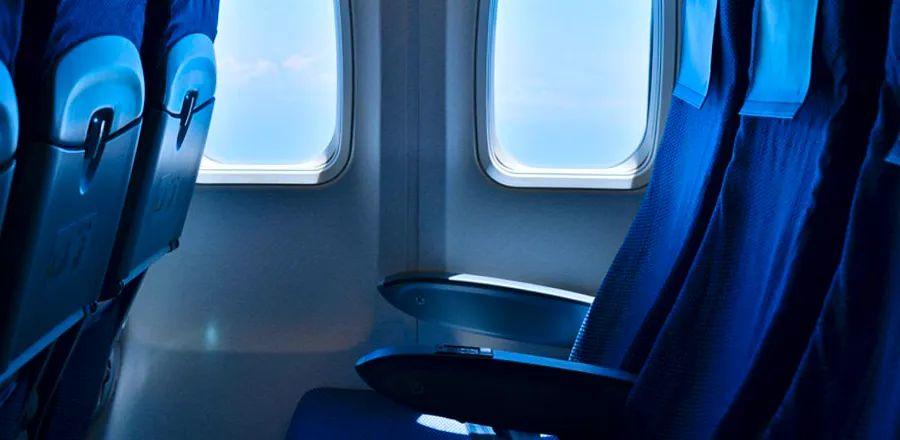Are Airplane Seats Overly Cramped? FAA Seeks Feedback and Listens Up

On August 3, the Federal Aviation Administration expressed its intention to gather public opinions on the necessity of establishing minimum dimensions for airplane seats. This review includes considerations of seat pitch as well as the width and length of the seats. The FAA's primary concern is the safety of these configurations, especially regarding passengers' ability to exit their seats during emergencies. Currently, manufacturers must demonstrate that they can evacuate a full aircraft in just 90 seconds.
However, travelers eager for more spacious seating may need to be patient: The FAA has clarified that its focus is limited to safety, explicitly stating that it will not consider comments about the unrelated topics of passenger comfort or convenience. Nevertheless, many feel these aspects are intertwined, as evidenced by nearly 5,000 comments submitted within a week of the announcement, well in advance of the November 1 deadline.
As expected, many frustrated passengers voiced their concerns. One anonymous user remarked, "Airplane seat dimensions are absurdly small and uncomfortable." Another added, "It’s nearly impossible to move, let alone cross your legs, and reclining feels like a crime." One commentator succinctly stated, "There’s nothing safe about cramming people in like sardines."
A self-identified "tall" traveler noted the decreasing seat pitch—averaging around 30 inches, but dipping to 28 inches on certain budget airlines—and lamented that airlines are exploiting their more spacious exit rows as a revenue source. Other complaints centered on seat width, which in economy class typically ranges from 17 to 18 inches. "I struggle to fit into my seat," one commenter mentioned, suggesting that "the aisle armrests should be movable for easier access in and out."
If this feels familiar, it's because this discussion has been ongoing for years. It traces back to 2018, when Congress passed a significant FAA authorization bill that mandated the agency’s administrator to create regulations establishing minimum standards for seat sizes, widths, and aisle dimensions—something unprecedented. The FAA was also tasked with gathering insights on seating from various sources, including the Centers for Disease Control, passenger advocacy organizations, and ergonomic experts.
No other mode of transport—trains, buses, boats—requires you to relinquish your mobility device upon boarding.
The FAA conducted studies on evacuation data and ran some tests. After multiple deadlines were missed and no standards were established, the consumer advocacy group Flyers Rights filed a petition in federal court in January 2022 to compel the agency to comply with the law.
"This has gone on long enough," stated Paul Hudson, President of FlyersRights.org, at that time. "The FAA has had three years to tackle this crucial safety concern," he emphasized, adding that "diminishing seat sizes can create safety and health hazards, especially during emergency evacuations." Whether this latest initiative from the FAA will finally produce some long-awaited standards remains uncertain. Passenger advocates were alarmed when the FAA submitted a letter to Congress in March, suggesting that simulated evacuations conducted in 2019 and 2020 indicated seating arrangements "did not negatively impact the success" of those tests. "I don’t see how the FAA, which is meant to ensure our safety, can claim this isn’t a concern," said William McGee, senior fellow for aviation and travel at the American Economic Liberties Project and author of the book Attention All Passengers. He suggested that setting a minimum seat pitch could be a starting point, but noted, "in the past, they’ve always delayed action."
This time, however, that delay may not be extensive. Transportation Secretary Pete Buttigieg seems to be paying attention to air travel challenges, advocating for new protections regarding family seating and addressing the rights of passengers with disabilities. In recent remarks marking the anniversary of the Americans With Disabilities Act, Buttigieg expressed support for a proposal allowing passengers to stay in their wheelchairs during flights—a change that would likely necessitate the removal of several rows of seats to make space. "No other mode of transportation—trains, buses, boats—requires you to forfeit your mobility device when you board," he stated, although he acknowledged that "we know this won’t happen overnight."
That might be putting it mildly: A subsequent statement from the DOT emphasized that additional testing is necessary "to determine how a secured personal wheelchair can satisfy the crashworthiness and other pertinent safety standards set by the FAA."

1

2

3

4

5
Evaluation :
5/5